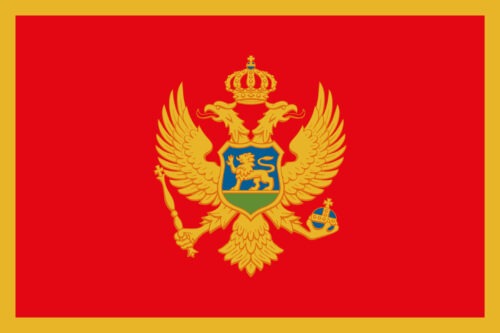Brief History of Montenegro
Rather than delving extensively into the intricate historical details of Montenegro, I aim to offer you a concise overview of historical facts readily available online. Your primary focus is likely to explore Montenegro's captivating tourist attractions, and my aim is to facilitate your discovery of these remarkable destinations, ensuring your experience is both informative and enjoyable.
Montenegro, a journey throught time
1. The Ancient Roots (9th Century BC - 6th Century AD)
Montenegro's history begins in the 9th century BC when Illyrian and later Roman settlements dotted the landscape. The Illyrians, an ancient Indo-European people, established the foundations of Montenegrin culture. The Romans, in their quest for expansion, absorbed these territories, leaving behind an enduring legacy of architecture, roads, and culture.
2. The Age of Empires (7th Century - 15th Century)
The region saw the arrival of the Slavs in the 7th century, contributing to the diverse cultural fabric of Montenegro. As the Western Roman Empire crumbled, Montenegro became part of the Byzantine Empire. This period also saw the establishment of the Zeta, which played a significant role in the development of Montenegrin identity. In the 14th century, a pivotal moment occurred with the establishment of the Nemanjić dynasty, leading to the rise of the Serbian Orthodox Church and Montenegrin statehood.
3. Ottoman Domination (15th Century - 19th Century)
Montenegro's turbulent history continued with the Ottoman conquest in the late 15th century. For centuries, the Montenegrin people, led by warrior bishops, resisted Ottoman rule, preserving their Orthodox faith and traditions. This period saw the rise of the famous "Black Mountain" moniker, which translates to "Crna Gora" in the local language. The Ottomans left a lasting imprint on Montenegro, with mosques, Turkish baths, and bazaars, and their influence can still be seen in places like the historic Old Town of Bar.
4. The Fight for Independence (19th Century)
The 19th century was marked by Montenegro's fierce struggle for independence from the Ottomans. Through a series of wars and negotiations, Montenegro succeeded in securing its sovereignty in 1878, becoming a recognized principality. The famous Battle of Vučji Do in 1876, where Montenegrin forces faced the Ottomans, is a symbol of the Montenegrin spirit and determination for independence.
5. Kingdom of Montenegro (1910-1918)
In 1910, Montenegro became a kingdom under King Nicholas I. This was a time of modernization and state-building, marked by infrastructure development and the establishment of institutions. However, this independence was short-lived. World War I brought significant changes as Montenegro became part of the newly-formed Kingdom of Serbs, Croats, and Slovenes in 1918.
6. The Yugoslav Era (20th Century)
Throughout most of the 20th century, Montenegro remained a part of various Yugoslav states, experiencing the ups and downs of this multi-ethnic union. Montenegro was a stronghold of the anti-fascist Partisan movement during World War II, and the country's wartime sacrifices are remembered with pride. Tensions eventually escalated, leading to the breakup of Yugoslavia in the early 1990s.
7. Montenegro's Independence (2006)
In 2006, Montenegro held a referendum on independence, resulting in a majority vote in favor of becoming a sovereign nation. Montenegro officially declared its independence on June 3, 2006, ending its union with Serbia. This marked the beginning of a new chapter for Montenegro as a modern, independent state, recognized by the international community.
8. A Modern European Nation
Today, Montenegro is a vibrant and independent nation, celebrated for its stunning Adriatic coastline, historic towns, and welcoming people. It continues to evolve, embracing its rich history while looking towards a bright and progressive future within the European family. Montenegro's journey through time is a testament to the endurance and adaptability of its people, who have preserved their unique identity while contributing to the tapestry of Europe's history.
Montenegro in numbers
Independency
17
Years of Independece
Tourism
2645217
Number of tourists in Montenegro last year
Citizens
620079
Montenegro has not so many citizens
Size
13812
km² , or 5,332 sq miles

Montenegro's national flag is distinctive, featuring a vibrant red field adorned with a golden double-headed eagle. This symbol holds historical significance, representing the country's ties to the Byzantine Empire and its rich heritage. The flag's striking design sets it apart from many national flags that typically feature red, white, or blue colors.
